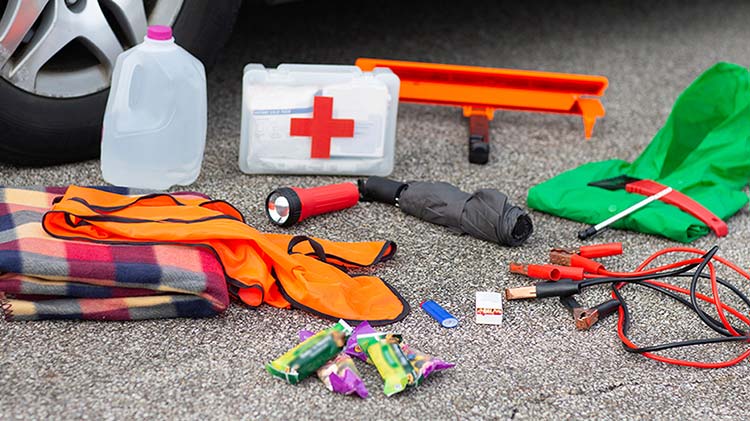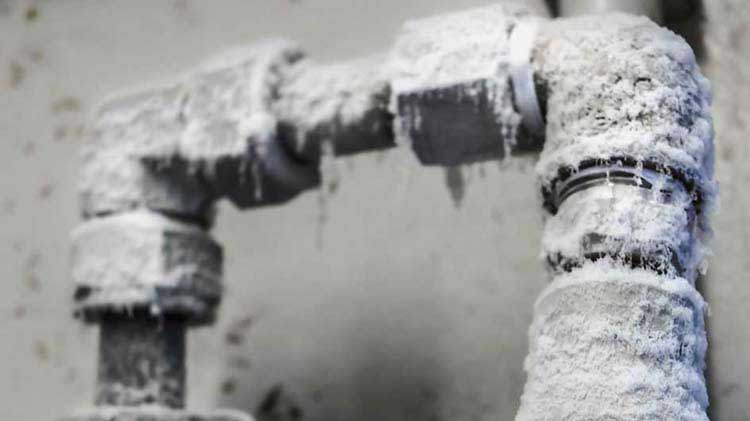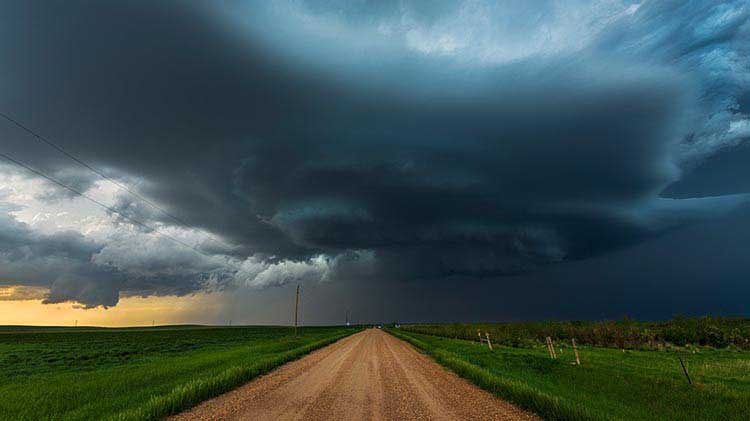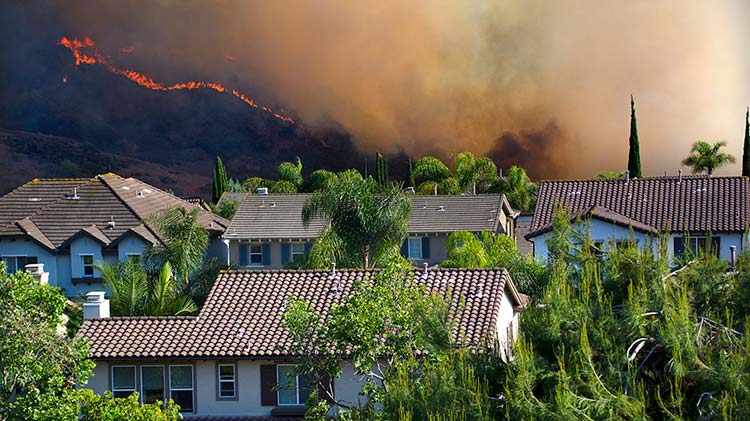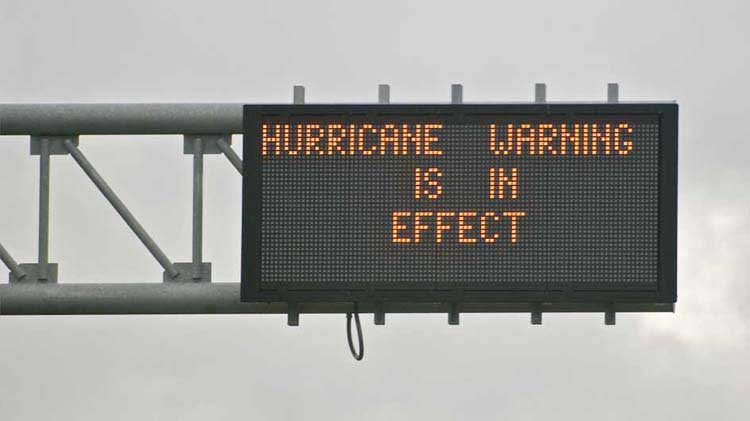What to include in an emergency kit
Having emergency kit supplies prepared ahead of time may give you the resources you and your family need to stay safe.
A disaster or emergency could leave you without power and/or help for several days, so having an emergency kit can help.
The contents of your kit depend on where it will be kept (home, car, boat or RV), the type of disaster you may face and if you have pets. Consider using a storage bin, backpack or duffel bag for easy access and portability as your “to-go bag”.
Home emergency kit basics
There are a few items that are useful to have in all types of emergency kits. Items for a basic survival kit include:
- First-aid kit — assorted bandages, gauze dressing pads, bandage rolls, first-aid tape, face masks, antibiotic ointment, tweezers and scissors.
- Medications — a seven-day supply of all prescription medications, pain relievers, stomach remedies and allergy medicines.
- Sanitation — sanitation bags, tissues, wipes, deodorizing chemicals and other essential hygiene products.
- Equipment — a knife or multi-tool, flashlight, battery or hand-powered radio, extra batteries, can opener, duct tape, whistle, cellphone chargers, extra cash and blankets or sleeping bags.
- Documents — copies of personal documents (birth certificates, medication lists or important medical information), proof of address, passports or other forms of ID and insurance policies.
Food and water
Food and water are important to include in all types of emergency kits. Here is a more detailed breakdown of what to include when putting together your kits.
Prepare one gallon of water per person daily and have a three-day supply for evacuations and a two-week supply for home sheltering.
Non-perishable, easy-to-prepare foods that your family is willing to eat should go into your kit and follow the same timeframes mentioned for water. Ready.gov suggests considering the following items to put in a kit:
- Dried fruit
- Peanut butter
- Comfort foods
- Protein or fruit bars
- Dry cereal or granola
- Pasteurized milk and fruit juices
- Canned meats, fruits and vegetables
- High-energy food like canned lentils, canned beans or crackers
Consider any special dietary needs for infants, children and adults when planning your food and check your kit every six months for expired foods.
Maintaining your emergency kit
To keep your emergency kit useful, it may help to maintain it regularly, as items can expire or become damaged.
- Replace expired food items
- Swap out corroded batteries with new ones
- Keep your emergency kit up-to-date and easily accessible
- Store canned goods in a cool, dry location, and keep boxed food in plastic or metal containers
- Reassess your needs annually and check your kit every six months for expired medications, make updates as needed
A basic emergency kit at home can be helpful when dealing with severe storms and other emergencies. However, different emergencies require different items. So, you may need to add items to your basic kit to prepare for specific situations.
Car emergency kit
Whether you’ve run into trouble on the road, live where you could encounter weather hazards such as snow and ice or evacuating from a disaster area, you should include an emergency kit for your car.
Items you may want to consider keeping in your vehicle include:
- Towline
- Gas can
- Toilet paper
- Paper towels
- Basic tool set
- Garbage bags
- Jumper cables
- Local and regional road maps
- Car emergency devices (road flares and reflectors)
Maintaining your tires and vehicle, and having the skills to drive in snow and ice are crucial for safe driving in any weather. Consider packing emergency supplies specific to winter and summer driving conditions.
Office emergency kit
Emergencies can happen anytime — even when you’re at work. Although your employer may have emergency supplies such as first-aid kits, tools and some sanitation items, those kits may be incomplete or not cover your specific needs. For a work kit to keep in your desk, consider the following items:
- Dust masks
- Emergency blanket
- Whistle with lanyard
- Safety glasses/goggles
- Leather-palmed work gloves
- Physical maps of the surrounding area
- Backup prescriptions or medications you need
RV emergency kit
If an RV road trip is your go-to summer vacation, remember to be prepared for emergencies. In addition to the emergency basics, you should consider bringing items that will help you maintain your vehicle and alert others to your presence. These additional items can include:
- Flares
- Spare tire
- Neon vest
- Tow straps
- Tire chains
- Tire plug kit
- Jump starter
- Traction mats
- Jumper cables
- Air compressor
- Hazard triangles
Boat emergency kit
Mechanical problems, weather or accidents can turn a fun activity into an emergency with little warning when participating in activities such as boating, skiing or hiking.
When planning an emergency kit for boat safety, consider this list of suggestions:
- Paddles
- Binoculars
- Radio equipment
- Fire extinguishers
- Bailer or bilge pump
- Anchor and extra line
- Tool kit for repairs, including spare parts
- Charts of the local area and a magnetic compass
- Personal items (sunscreen, medicines and sunglasses)
- Extra clothing, such as warm clothes, a hat and foul-weather gear
Hiking emergency kit
When skiing or hiking, consider carrying a first-aid kit, along with water and non-perishable food in case of a mishap on the trail. Wear layers and bring extra clothing to protect yourself from unpredictable weather and potential dangers like hypothermia and frostbite.
Since you’ll be on the move and won’t be able to carry a full emergency kit’s worth of supplies, put together a pack that can at least buy you some time and help keep you safe.
- Firestarter
- Physical maps
- Hand warmers
- High protein food
- Layers of extra clothing
- Sunscreen and sunglasses
- Low-weight emergency blanket
- At least one large reusable water bottle
Also, be aware of any weather changes or wildfire forecasts for the areas where you’ll be hiking.
Pet emergency kit
A disaster kit is also essential for your animal family members. Preparing a pet kit for them is important for their well-being, too. In addition to having their food, water, vaccination information and leashes, include the following:
- Contact Information — include the contact details of at least two people who can care for your pet in case you're unavailable.
- Daily care instructions — write down your pet's daily care routine for anyone who may be caring for them.
- Food and water — pack at least two weeks’ worth of food and treats, plus a supply of clean water.
- Identification and restraint — see that your pet has an extra collar with ID tags and update their microchip information. Also, pack an extra leash and harness.
- Comfort and care — bring your pet's favorite toys, bed and blanket. If you have a cat, include a litter box and cat litter.
- Medical information — pack your pet's vaccination records, contact information for your veterinary clinic and any medications or prescriptions with instructions.
- Transportation — have a crate or carrier ready to transport your pet safely.
Many emergencies will require pet owners to leave their pets at emergency shelters, be prepared with addresses of a few local locations in case you need to.
Hurricane emerency kit
If you live in an area prone to severe thunderstorms or hurricanes, it's crucial to have an emergency kit and a hurricane evacuation plan. Remember that the items required for sheltering in place differ from those needed to evacuate. Consider including the following necessities:
- Mosquito repellent
- Allergy medicine and antiseptic
- Umbrellas and waterproof jackets
- Extra clothing, blankets and sleeping bags
- An easy-to-grab “to-go” bag with your supplies in it
- Ziplock bags to protect cash and other important documents
- Sunscreen in case you are stuck outside for long periods
For sheltering in place, the basic home emergency kit listed above provides a starting point for items you may need. Consider having a kit at home, in your car and at your workplace as a hurricane can approach quickly and catch you off guard.
Earthquake emergency kit
Earthquakes are disasters that can often occur without warning. If you live in an area with an earthquake threat, consider making earthquake preparations to your home as well as keeping a basic home emergency kit (see supplies above).
Additional items Ready.gov suggests keeping in an earthquake emergency kit are:
- Dust masks
- Water purification tablets
- Whistles to signal for help
- Plastic sheeting and duct tape
- Waterproof plastic bags for waste disposal needs
- Tools such as wrenches or pliers that can be used to shut off utilities
Wildfire emergency kit
Wildfires can spread fast, requiring quick evacuation. In addition to the basics, a wildfire "go-kit" will likely include essential daily-use items you may not have pre-packed, like:
- Masks
- Extra clothes
- Fire extinguisher
- Cellphone chargers
- Prescribed medications
- Copies of personal documentation
- A local map with evacuation locations
While creating an emergency kit for your home, car, office or outdoor activities requires some time and planning, it's a worthwhile investment that can help you and your family stay safe during a disaster.
Now that you have learned about different emergency survival kits, you may want to read how to shut off your utilities in an emergency or what to do when your basement floods.
